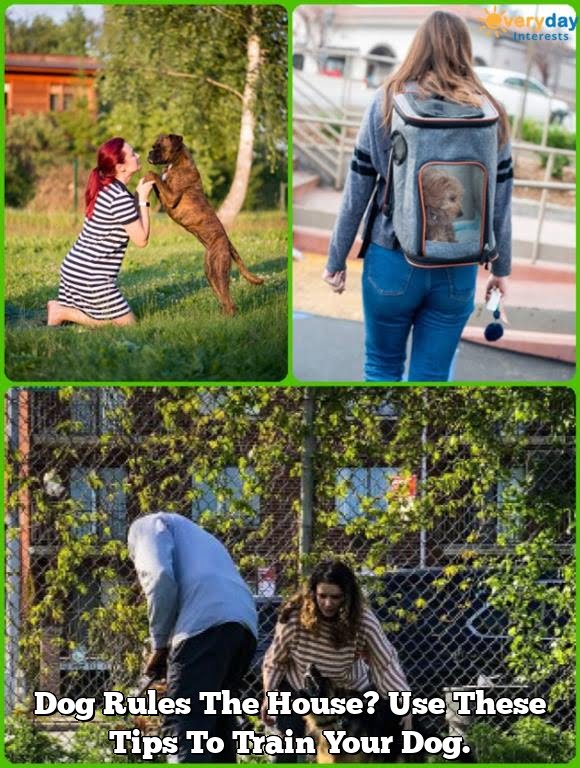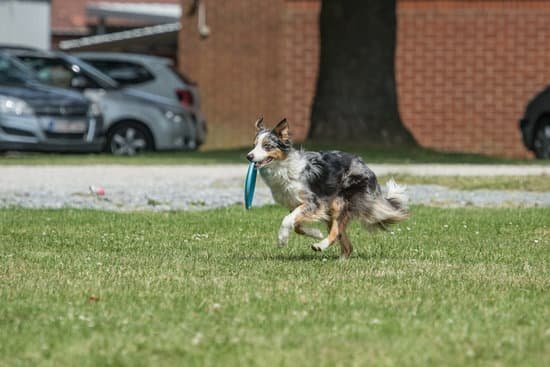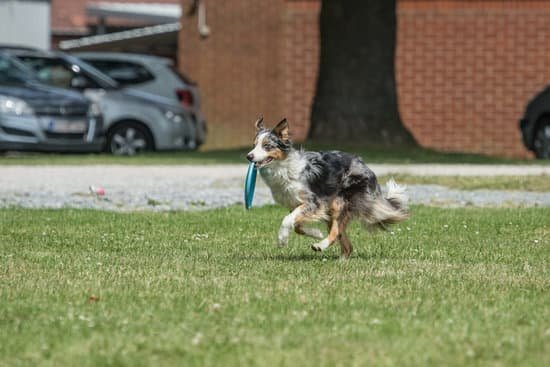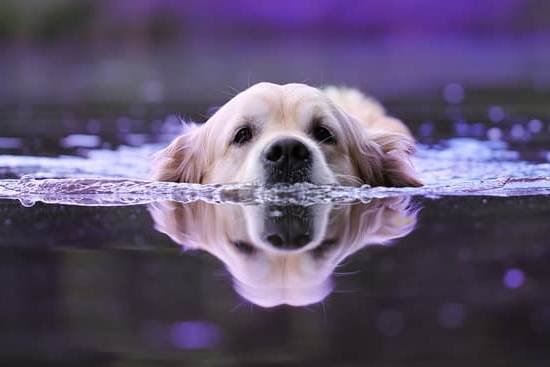Introduction
Training an untrained dog can have a number of advantages. Beyond the obvious practical benefits of having a well-behaved dog, forming a bond with your puppy or new rescue as you train them can be incredibly rewarding. Through positive reinforcement and consistent application of protocols and rules, even the most stubborn pooch can learn good habits that make both their behavior and yours easier to manage in any situation. Training is also an incredibly important tool for helping to meet the needs of your pet and promote healthy development within your developing relationship.
While it may seem daunting at first, training an untrained dog can be one of the most enjoyable experiences you will ever share with them. Establishing trust between yourself and your pet can help form lifelong connection between both of you that is based on mutual respect. Teaching commands like “sit” are often used as tools for reinforcing good behaviors, but they are also tailored to help meet specific needs that sometimes require creativity on your part — such as teaching basic navigation commands like “come” which will ensure they stay safe while exploring unknown territory.
Successful training requires time and effort but with some patience you’ll have consistent results in no time! Before beginning formalized training sessions, it’s important to make sure all involved (you and your pup) feel comfortable and relaxed. This means socializing your pooch before introducing new concepts or concepts that might induce stress or anxiousness — keep in mind the saying; slowly slowly catchy monkey! Most importantly though, utilize positive reinforcement whenever possible; praising when appropriate provides far better results than punishing outbursts or poorly behaved behaviors so combine this with lots of love for optimal results!
Assessing Your Dog’s Temperament and Personality
Before you start any training with an untrained dog, it’s important to take the time to assess your dog’s temperament and personality. Different breeds of dogs may respond in different ways to new tasks or situations. Some breeds are naturally more independent or territorial while others may be more compliant or eager-to-learn. Temperament can also differ depending upon how much socialization your pet has had prior to coming into your home and their general level of confidence – all these factors will help you decide which types of exercises will work best for each particular animal.
By observing your pup’s behavior towards different people and animals, you will be able to identify some clearly established behaviors that may need a bit more attention when training. If a certain situation causes nervousness, anxiety or aggression, then it is important to address these issues early on so as not to set back the overall training process. Understanding how a dog reacts can help you learn its triggers and find methods specifically tailored for that pup in order to continue without disruption. Patience is key when evaluating behavior patterns of an untrained dog as they do not always understand what is going on initially.
Setting Up a Structured Environment for Training
When training an untrained dog, setting up a structured environment is key to success. This environment should include clear guidelines and boundaries, as dogs rely on consistency in order to learn what is expected of them. Establish consistent routines by feeding your dog at the same time every day and taking them out for walks and potty breaks at regular intervals. It’s also helpful to give your dog specific activities to do in order to keep them from getting bored or restless. These might include things like chew toys, interactive dog puzzles, or games of fetch with a toy.
Finally, teaching basic commands such as “sit” or “stay” are invaluable tools for controlling behavior. Start by rewarding good behaviors with treats or praise so the dog learns that these behaviors are encouraged – always finishing each lesson with something positive! Work on one command at a time until it can be reliably performed; then move onto the next command until you have trained your pup in all necessary areas. Consistency is key – repetition is essential for helping your pup understand what is expected of them!
Developing Clear Commands
Having clear commands is key to successfully training an untrained dog. Begin by teaching your pup the simple commands such as “sit,” “stay,” and “come.” It can be helpful to make a chart or poster with visuals illustrating each command beside their corresponding verbal command. This can help to reinforce what you expect from the pup and provide a visual aid when training at home.
It is equally important that these commands are tailored to your dog’s understanding. Employing commands with fewer words and simpler language can yield faster results and better development of your pup’s comprehension.
Once your pup begins distinguishing between basic commands, it is imperative to then shift into positive reinforcement for continued development. Once the pup has been praised for simplicity, try slowly introducing more intricate commands like “give paw,” “roll over,” or even fetching objects on the first try! Positive reinforcement sets up your puppy for success by focusing on habits you do want them to repeat instead of punishing unwanted behavior which can cause confusion among dogs. Focusing on building a strong bond with your pup will aid in its longterm obedience training while being sure to also train patiently and gradually offers healthy mental stimulation which will personalize each experience unique to its own pet/owner relationship.
Utilizing Positive Reinforcement
One of the most effective ways to train an untrained dog is by utilizing positive reinforcement techniques with a reward and praise system. Building trust and developing a bond between you and your dog is essential when it comes to training. Positive reinforcement involves rewarding desirable behaviors with a treat, toys, or verbal praise.
In order to maximize its effectiveness, the reward or praise should follow immediately after the desired behavior in order to reinforce it. It’s also important not to give too much attention when your pet doesn’t engage in desired activities, as this can lead to confusion and have the opposite effect of reinforcing the undesired behavior. Different dogs respond differently to different forms of rewards, like treats or toys, so you must experiment and discover which works best for your pet.
When introducing obedience commands, repetition is key; you may need to go over many lessons multiple times for your untrained pup to get used to it and start executing correctly. Patience will be necessary during this process – don’t become frustrated if it takes some time for them to learn properly! Showing consistency when giving rewards is also extremely important; if possible, try sticking to one type of reward (either treats or verbal praise) each time because having several types may confuse your pet. Finally, make sure you keep sessions short at first (no more than 10 minutes) until both you and your pup get more comfortable with obedience training!
Troubleshooting Common Issues
The first step in training an untrained dog is to recognize and address behaviors that may be causing stress or triggering aggression. Some common signs of an anxious or stressed dog include barking excessively, pacing, panting heavily, or cowering.
If your dog is displaying these symptoms, it’s important to look for a pattern in their behavior and assess what the underlying cause could be. Physical discomfort such as illness or parasites can cause behavioral problems, so it’s important to make sure your pup receives a comprehensive medical exam from their veterinarian to rule out any medical issues before beginning any training regimen.
In addition to physical concerns, other causes of stress can include fear and/or anxiety due to lack of socialization with people, unfamiliar noises such as thunderstorms or vacuuming, separation anxiety if left alone, and confinement issues if your pup isn’t allowed enough time outdoors. If you believe any of these may be contributing to your pet’s problem behaviors, think about ways you can reduce their exposure to triggers while also developing a plan for positive reinforcement-based training aimed at teaching them how to overcome stressful situations.
To help you with this process, consider working with a reputable trainer near you who has experience dealing with untrained dogs so they can provide guidance on how to proactively prevent problem behaviors from developing in the future.
Reinforcing the Basics
Training an untrained dog should focus on reinforcing the basics. Initially, this means regular practice and working on key obedience commands such as come, sit, stay, down, and leave it. Utilizing verbal commands and hand signals for each of these commands will ensure that your dog stays attentive and better understands exactly what you are asking it to do. Using positive reinforcement when your pup responds correctly is a great way to motivate them while they learn. Make sure to reward your pup with treats or toys during or after successful completion of an obedience task or exercise. Structure is also important during training, so create a routine that ensures each behavior is practiced throughout the day in short 10-15 minute increments as any longer could make them disinterested or overstimulated. As your pup’s obedience improves, you can add more challenging tasks or activities such as agility training where they are asked to follow complex instructions around specific courses.
Transitioning to Off-Leash Activities
In order to have success in off-leash activities and preparing for distractions, it is important to take baby steps. Start by teaching the dog basic obedience commands such as heel, stay, come, drop it etc. indoors and focus primarily on establishing a reliable recall (come when called) with no treats or toys present as a distraction. Gradually carry the training outdoors into a quiet environment where there are few distractions so the pup can easily focus on you alone and your commands. As your pup masters each command at one distance gradually increase the distance at which you practice them making sure to always reward good behavior with either praise or treats. When you feel confident that your pup has mastered each command at greater distances begin adding distractions such as people or other animals into the mix but again start with one low level distraction and then move up from there. You may also try using a long line as a safety precaution while venturing out off leash in public spaces that are unsecured and have lots of potential distractions around. Lastly introducing your pup to larger, more varied environments and activities can help build confidence when faced with new environments and give them an opportunity to learn better impulse control.
Exploring Advanced Techniques
Dealing With Aggression: If your untrained dog is exhibiting aggressive behavior, there are several things to consider in order to help him. First, always be aware of why your pup may be lashing out. Is he reacting fearfully because the environment is new? Or is this a sign of a deeper issue, such as separation anxiety or dominant behavior? Utilize positive reinforcement and take note of what triggers aggression in your pup so you can choose the best training techniques going forward.
Trick Training: Trick training can be fun for both you and your pup, and it also encourages bonding and attentiveness. Start small with basic commands like “sit” or “come” and then work up to more advanced feats like roll-over or play dead. It’s important to keep track of how your pup responds when you reward them for progress made; if their attention turns towards food rewards rather than you, switch to verbal affection instead.
Off-Leash Control: Off-leash control takes considerable patience and timing from both the handler and dog alike! Start by introducing basic commands like “come” on a leash first before graduating to open spaces without restriction. Keep treats handy for when they respond correctly, giving them plenty of positive affirmation every step of the way. Additionally, practice using calls from further away each time; as they begin responding better each time, gradually increase the distance between you two until they start understanding that they need to come back no matter what!
Ending on a High Note
Training an untrained dog can be a difficult and daunting task due to its unpredictability. However, with patience and perseverance you can train your pet effectively. After each training session, it’s important to celebrate the progress you’ve made and reward your pet for their hard work. Whenever possible, try to make the learning process fun for both you and your pup. As an added incentive, choose rewards that your pup loves such as treats or belly rubs. Also consider adding additional play or activity time into the practice sessions through activities like fetching or playing tag with other pets.
Once you have taught a few basic commands such as sit, stay, lay down and come it’s best to train several times a day while maintaining consistency in order to reinforce good behaviors in your pup. Keep in mind that learning is not limited to just commands but also exploring different kind of environments in ways that help prevent stress while on walks or at parks. For example allow safe sniffing time when walking through a park or meeting other people or pets so your pup learns how to respond appropriately. It’s also important to continually evaluate what works well during each training session and decide when it’s time for something new instead of repeating the same command multiple times for one session because this may overstress your pup or cause them to lose focus.
Finally, once you are satisfied with the progress made it’s important to call it a day instead of putting too much pressure on immediate results. By celebrating successes along the way and taking breaks before ending your training session will ensure that both you and your puppy feel successful about what was learned that day and helps gives positive associations with future training sessions rather than feeling overwhelmed by long-term goals.
Conclusion
To summarize, training an untrained dog requires patience, consistency, and positive reinforcement. When training your dog, keep in mind that they are a work in progress. You should use positive reinforcement when teaching new behaviors and have patience when mistakes are made. Additionally, be consistent with commands and only give reward when the behavior is done correctly. Finally, set achievable goals for both you and your pup but always focus on having fun during the process. Overall, dog training is immensely beneficial to you and your pup as it helps strengthen the bond between pet and owner. It helps create clear communication between both of you and also increases obedience. Furthermore, taking the time to train your pup can help prevent behavioral issues from escalating into larger problems down the road.

Welcome to the blog! I am a professional dog trainer and have been working with dogs for many years. In this blog, I will be discussing various topics related to dog training, including tips, tricks, and advice. I hope you find this information helpful and informative. Thanks for reading!





